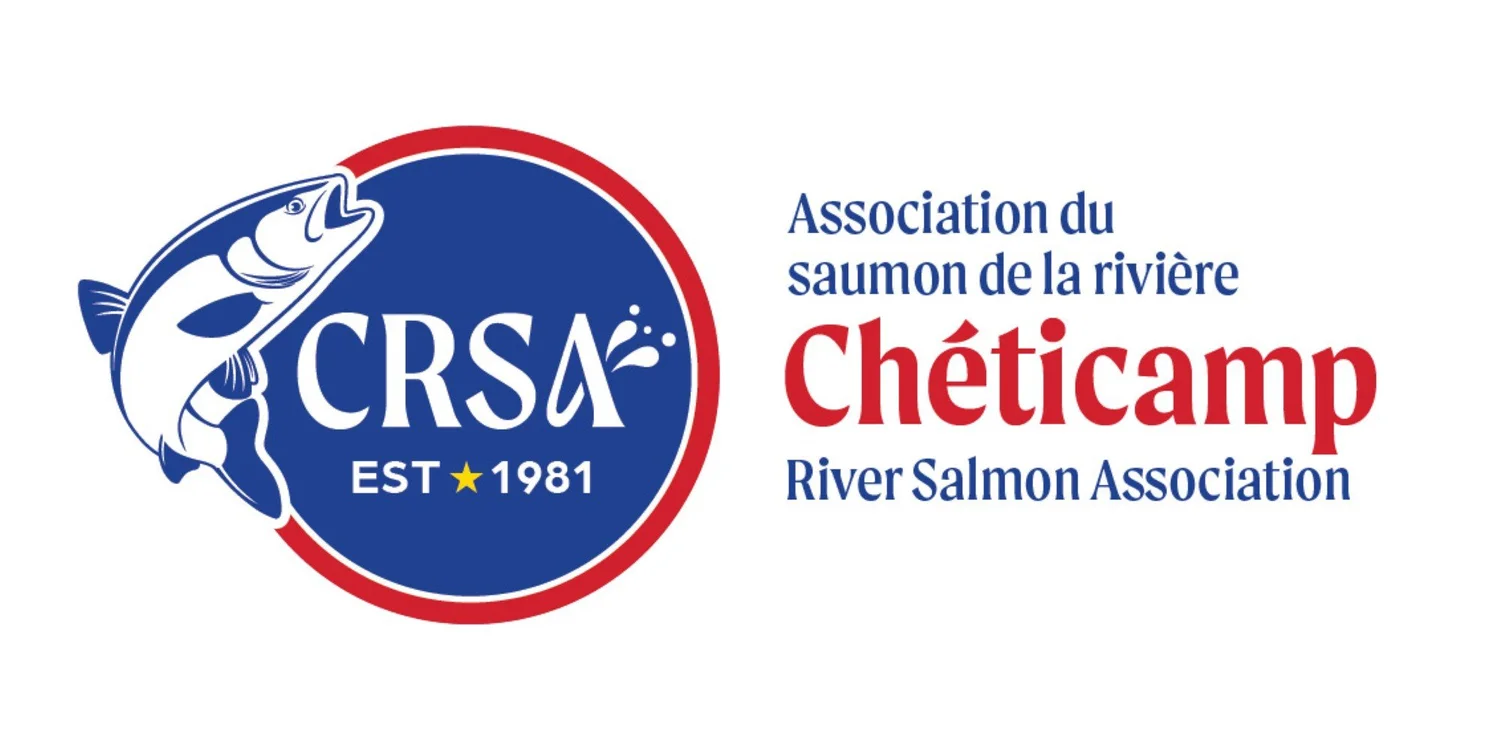Things may be different this summer, but not less busy!
It is so cliché, but really, where does the time go?
This summer seems to be absolutely racing by, probably in part due to how busy we have been here at the Cheticamp River Salmon Association (CRSA). Thankfully, we still have two weeks left with our summer work crew, and we plan to keep the momentum going here in Cheticamp.
The CRSA’s work this summer has been split between several projects. Top of the list has been continuing with data collection and site assessments on the Cheticamp River - the results of which will be incorporated into an Atlantic salmon conservation plan for the Cheticamp River. This document is already a work in progress, with the CRSA having began development of the plan last year.
CRSA President Rene Aucoin (left) and Project Manager Jillian Baker (right), meet with project consultant Charles MacInnis (middle) to assess conditions on the Cheticamp River.
CRSA student crew working alongside staff with Cape Breton Hgihlands National Park on data collection on the Cheticamp River.
The CRSA is hoping that the finished document will be an important piece of stakeholder input for Cape Breton Highlands National Park that will help guide future management decisions and conservation work involving with Cheticamp River. The plan will include new baseline data for the Cheticamp River, including results of habitat mapping work and extensive habitat assessments, findings from a four-year water temperature investigation on the Cheticamp River and preliminary thermal maps for the lower Cheticamp River, as well as recommendations for future restoration and monitoring activities, as well as other conservation measures.
CRSA’s summer crew taking elevation measurements as part of data collection on the Cheticamp River.
CRSA student crew leader, Matthew Fraser, helps install water temperature loggers on the Cheticamp River as part of the CRSA’s ongoing investigation into summer water temperatures.
In addition to the work on the Cheticamp River, the CRSA has also been spending considerable amount of time focused on Farm Brook, a smaller watercourse just south of Cheticamp. The CRSA began work this summer on developing a subwatershed fish habitat restoration plan for Farm Brook. This has meant a lot more data collection, including taking channel measurements, collecting data on a variety of water quality parameters, and mapping out key features, habitat issues, sites of completed or ongoing restoration work, adjacent land-use practices and development, etc.
The CRSA is also undertaking a combination of instream and riparian restoration on Farm Brook this year. The CRSA’s student work crew has already planted 250 native tree seedlings along the banks of watercourse, with the bulk of the seedlings planted along a stretch near the mouth of the brook that was impacted by a massive debris blockage. The student crew has also installed a digger log – an instream structure that mimics a naturally fallen tree and is designed to help with development and maintenance of important pool habitat. Finally, the CRSA is planning work to address a rock berm on Farm Brook that is restricting the brook’s ability to access its floodplain and is contributing to channel instability and impacted habitat downstream of the berm. Check back for more updates on this as the restoration work involving the berm will be featured in a later post.
CRSA’s student crew working on installing digger log on Farm Brook.
Riparian planting work underway on Farm Brook.
The CRSA has been able to tackle these and other projects this summer thanks to funding and support from a variety of partners and funders. The Atlantic Canada Opportunities Agency (ACOA), Atlantic Salmon Conservation Foundation, the Nova Scotia Salmon Association’s Adopt-a-Stream Program, and Susan and Graham Smith have provided funding to cover the CRSA’s project costs. Clean Foundation, Service Canada’s Canada Summer Jobs Program, and the National Trust for Canada and the Department of Canadian Heritage’s Young Canada Works Program all helped cover costs of employing CRSA’s student work crew. In-kind contributions have been generously made by Cape Breton Highlands National Park, the Atlantic Water Network, Fisheries and Oceans Canada (the conservation unit in Cheticamp), and Dalhousie University.






